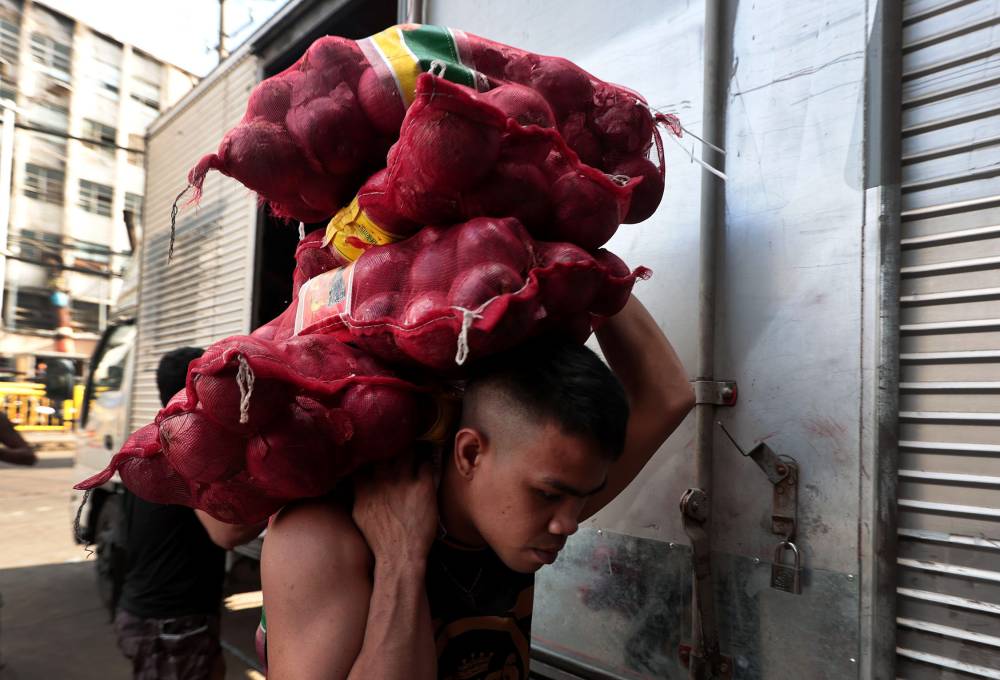DA: Imported onions coming to avoid repeat of ‘2022 crisis’

The Department of Agriculture (DA) has approved the importation of 4,000 metric tons of onions to avert a repeat of the sharp spikes in 2022 when retail prices reached a record high of P700 a kilogram.
Agriculture Secretary Francisco Tiu Laurel Jr. said on Thursday that he has authorized the procurement of 3,000 MT of red onions and 1,000 MT of the white variety from abroad.
Tiu Laurel said in a statement that the shipments, which are expected to arrive within the next two weeks, aims to ensure sufficient buffer stocks while awaiting fresh local harvest.
“We will not risk a potential shortage that unscrupulous traders could exploit to drive up prices, as we saw in the past. We do not want a repeat of the 2022 crisis,” he added.
In 2022, the price of onions—an essential ingredient in Philippine cuisine—soared to all-time highs due to delayed imports and a supply shortage allegedly caused by hoarding.
Latest data from the Bureau of Plant Industry (BPI) placed the country’s monthly consumption at 17,000 MT for red onions and 4,000 MT for white onions.
Bumper harvest
As of mid-January, the BPI reported that red onion stocks in storage stood at 8,500 MT, while white onion stocks were at 1,628 MT.
According to the DA, the inventory of red onions, following a bumper harvest last year, is expected to last until February, when the new harvest season begins.
Onion production totaled 264,323 MT last year, up by 4.7 percent from 252,488 MT in 2023, according to the Philippine Statistics Authority. It was also the highest production since 2019.
“While we were assured during our consultative meetings that there is still ample supply of onions, BPI recommended minimal imports to prevent major price spikes,” said BPI Director Gerald Glenn Panganiban.
“Also, due to the typhoons that hit late last year and prevalence of pests and disease, this importation is meant to be a buffer for possible supply gaps. This move is a preemptive measure,” he added.
Panganiban said current projections showed several tons of onion would be harvested this month and around 33,000 MT in March.
Onion cartel
Retail prices have been increasing this year, with local red onions in Metro Manila selling from P115 to P220 per kg as of Feb. 5, higher than P80 to P160 in the same period last year, according to the DA.
Local white onions retailed between P120 and P140 per kg, also up from P60 to P110 a year ago.
The outrageous increase in onion prices in 2022 prompted Congress and the Philippine Competition Commission (PCC) to investigate suspicions on the involvement of a cartel that allegedly manipulated supply and prices.
In July last year, the enforcement office of the PCC filed charges and recommended penalties totaling P2.42 billion against 12 onion traders and importers for allegedly acting as a cartel since 2019 in violation of the Philippine Competition Act.
The respondents were found to have imported 28,916 MT of red onions and 47,639 MT of yellow onions from 2020 to 2021.
It said the firms and individuals, collectively referred to in previous congressional hearings as the “onion cartel,” allocated the supply of imported onions by assigning among themselves the sanitary and phytosanitary import clearances issued by the DA in violation of the anticompetition law.
The PCC said the importers and traders also divided among themselves the volume of onions allowed to be imported.
In doing so, the PCC argued that the “respondents effectively controlled more than 50 percent of the volume of onions imported into the Philippines,” pointing out that such collusion led “to lower supply, higher prices, poorer quality and less innovation.”
It also noted that the companies and individuals connived to lessen competition by exchanging sensitive business information, such as price, suppliers, customers, volume, shipping, distribution and storage.
















